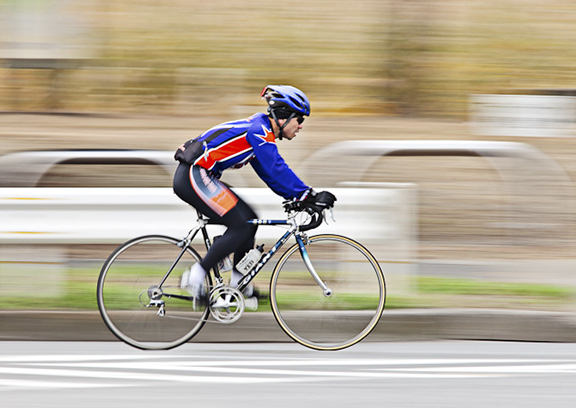Assignment Unit 3
Slow down, speed up, DO IT ALL. {I shutter to think about it…}

Motion
This week we’ll explore ways to show or imply motion with your camera. While depth of field was a product of the LENS (with the shutter speed adjusted just to give us proper exposure), depicting motion is reliant on the shutter of the camera as the primary setting, and this time the f/stop (aperture) is along for the ride to give proper exposure.
There are three kinds of motion usually described as presentable in a still photograph. Using these we are able to give the feeling of the motion in the real scene to a static two-dimensional print.
The first is the STOP ACTION photograph. This is an image made of action or motion at a high shutter speed. 1/500, at least, even 1/1000 (or higher). Using this method, we are able to depict what our eye cannot catch. The drops of water off a shaking dog, the bend of a athlete jumping over the high bar, of the smack of the ball coming off the bat in baseball. This is a common technique in sports, as might be obvious, and lets the viewer see a frozen frame of action out of our constantly moving world.
Second is the PAN photograph. Here we follow the action with the CAMERA MOVING WITH THE SUBJECT, using a slower speed. At least as slow as 1/15. Even more fun, but trickier to accomplish well, at 1/8-1/2 second. The camera is hand held. The subject is moving usually in a linear fashion. The photographer tracks, say, the face of the subject, and smoothly releases the shutter while following through with the motion. This gives an image with the moving object mostly sharp, and the background blurred out. Think of panning with a bicyclist going by you, for instance.
The last is the BLUR shot. This can be the most challenging motion technique, so I’ll look and give kudos for inventive and visually stimulating blurs! Here, as in the PAN, we use slow shutter speeds. But brace the CAMERS SO IT IS HELD STILL, and let the motion go through it. It is kind of an inverse pan. So the moving object will be blurred out, and the background will be still and sharp.
Try to make interesting and surprising images. Navigate to the Blackboard folder for Unit 3 to submit your three most successful photos, one for each technique.
